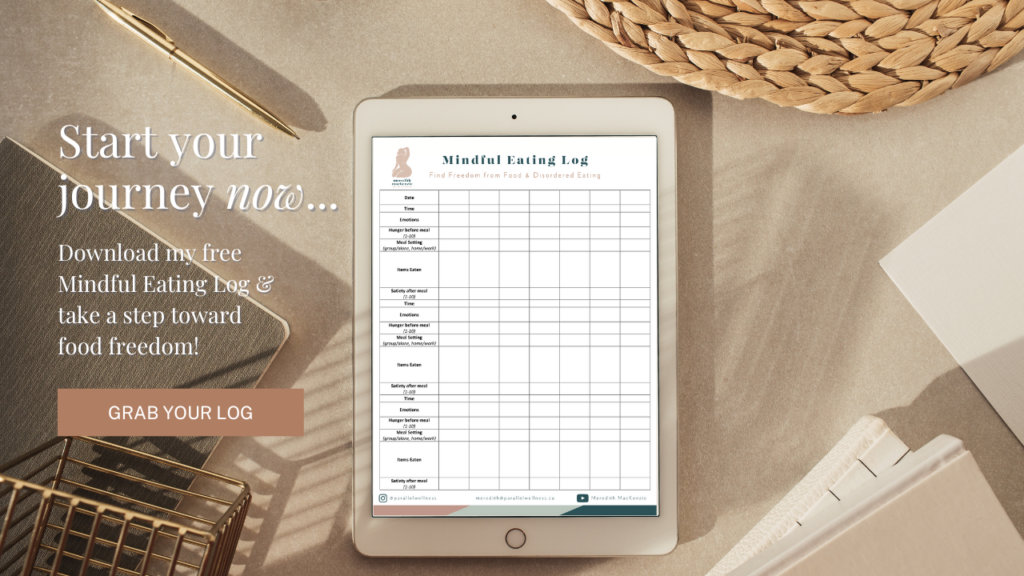Binge Eating Disorder (BED), is characterized by recurrent episodes of consuming unusually large amounts of food within a specific time frame (typically two hours), often leading to a sense of loss of control. BED comes with key indicators and it’s important to recognize these warning signs so you can seek help from qualified professionals to establish a healthier relationship with food and your body.
Eating in Excess Over a Short Period
Binge eating episodes involve consuming significantly more food than one would typically eat during a regular meal or snack. Normal eating habits vary among individuals, and occasional overeating is nothing to worry about. Binge-eating, on the other hand, involves consuming unusually large quantities of food in a focused time frame, unlike grazing throughout the day or spreading meals out.
Eating When Not Hungry or Already Full
Binge eaters may experience a disconnection between their mind and body, leading them to ignore hunger cues or eat despite feeling full. This makes it challenging to recognize hunger and satiation cues accurately. As a result, they might eat despite not feeling hungry or continue eating even when full, using food as a way to regulate their emotions and physiological needs. Some individuals find it difficult to tap into their hunger levels, leading to a lack of awareness and potentially overeating.

Feeling Out of Control
Those with BED describe a sense of detachment or dissociation during binges, feeling driven to continue eating compulsively without being fully in control of their actions. This loss of control is often linked to previous episodes of food restriction, where the body’s drive for nourishment becomes intense due to deprivation. As a result, individuals may find themselves snacking compulsively even when not hungry or anticipating a meal.

Eating Rapidly
This behavior is linked to the sense of lack of control over eating, where individuals describe feeling driven by an internal motor focused solely on consuming food. During a binge, people may take bigger bites, not savor the flavors, chew less, and swallow quickly, all without truly enjoying the food. This urgency to eat stands in stark contrast to the relaxed state we aim for during regular meals, where we can savor and enjoy our food.
Eating Until Uncomfortably Full
During a binge, individuals often disassociate, using activities like watching TV or YouTube videos to distract from distressing emotions. This disconnection extends to hunger sensations, and many people report becoming aware of fullness only after the binge episode concludes. In the moment, they may continue eating, but afterward, they experience physical discomforts, such as stomach pain and digestive issues.
Eating Alone or in Secrecy
Due to feelings of shame and guilt, individuals with BED tend to binge eat in private and avoid sharing their experiences with others. Binge eating becomes a personal coping mechanism for feeling safe, relaxed, and comforted when alone, helping regulate emotional and physiological distress in private. This behavior contrasts with the social norm of shared meals during celebrations and gatherings. Binge eating episodes are mostly experienced in solitude. You may even plan binges after enjoying a complete meal with family, keeping this aspect hidden from others.
Emotional Distress
Binge eating is often associated with a range of negative emotions: depression, shame, guilt, disgust, and sadness, both during and after the episode. It’s important to remember that food does not possess moral value. Experiencing these emotions in connection with eating behaviors may indicate disordered eating or an eating disorder. This emotional dysregulation reinforces negative self-perceptions, body image, and the secrecy around binge eating, perpetuating the cycle further.

Dieting
Some individuals with binge eating disorder may also attempt to restrict their eating at other times to manage their weight, leading to an ongoing cycle of binge eating and dieting. However, because they also engage in binge eating episodes, they often do not experience weight loss. In fact, some may even gain weight. This pattern of engaging in dieting behaviours alongside binge eating is a common characteristic of the binge eating cycle.
Recognizing the warning signs of Binge Eating Disorder is the first step toward a healthier relationship with food and your body. Remember that seeking professional help is crucial to receiving an accurate diagnosis and effective treatment. By taking action and reaching out for support, you can begin your journey towards overcoming BED and achieving a more fulfilling life with freedom from food-related struggles.
To learn more about binge eating watch my Youtube video here.
These steps are meant to guide you in a way to end your binge eating cycle. But sometimes they are easier said than done.
I encourage you to check out more resources to help tailor a plan of action toward your unique cycle. You can find more resources by checking out my Youtube channel. I’ve also created a helpful mindful eating log – a tool that I use frequently with my clients. Let’s be honest, the binge eating cycle is difficult to overcome. It requires more than one single blog post full of tips to make a change, so check back for more!

